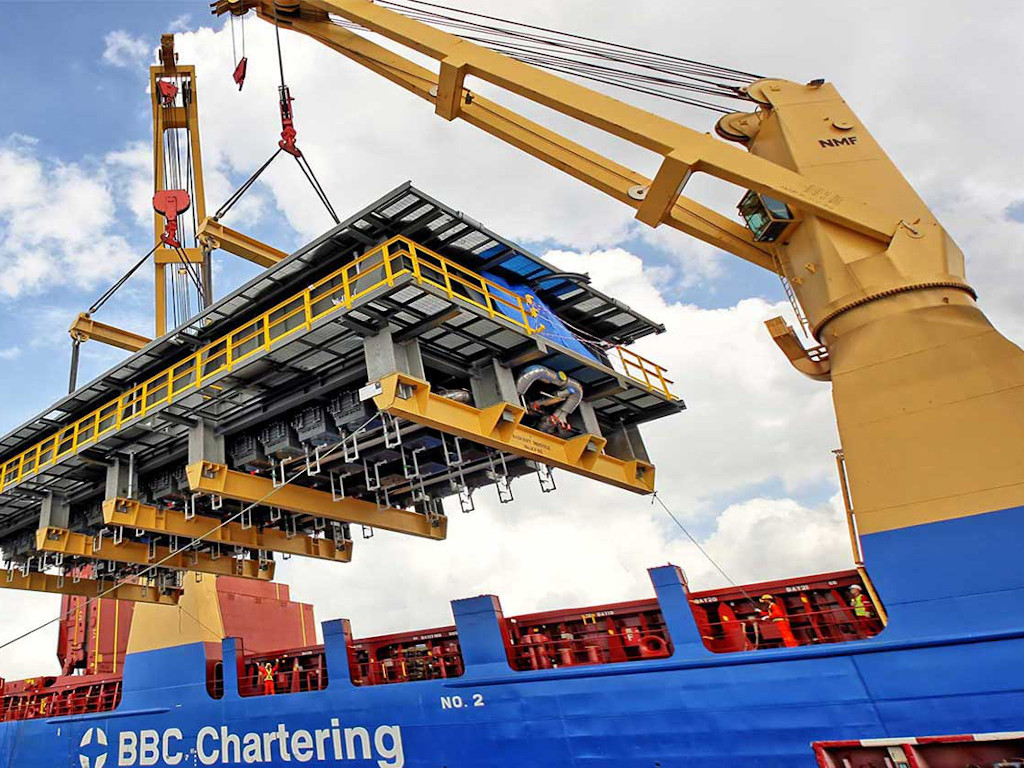Ed Bastian, Director of Global Sales for BBC Chartering USA, Special to the AJOT
Last February I wrote an article entitled “Container Crisis Opportunity in the Multipurpose Sector” concluded the article by saying “It should be an interesting year,” and 2021 didn’t disappoint.
The multipurpose and bulk operators have benefitted greatly as a result of this container surge. Many shippers are seeking solutions outside the “box” for their stranded cargos. A wide variety of traditional container commodities are now being carried by multipurpose vessels including high value chemicals, appliances and solar energy equipment to name just a few. Numerous shippers, forwarders and NVOCC’s are securing multipurpose tonnage to load shipper owned or leased containers when they can find them. Those who took action early have been able to curtail significant supply chain disruptions. Forward vessel availability remains the most significant challenge at the moment. Many vessels are now being fixed by as much as 90 days in advance of cargo readiness.

Challenges in 2022
As we move toward 2022 the multipurpose operators still face some uphill challenges. A number of COVID-19 related issues remain in many parts of the world. This includes port congestion and delays, labor productivity and availability of skilled labor, delays in cargo readiness, and COVID restrictions effecting ship’s crews and terminal operations. Vessel capacity shortages and the high price of bunker fuel will also be contributing factors in freight rates remaining high.
For years now importers have been working diligently to trim any excess time and costs from their supply chains which leaves little wiggle room when disruptions of this magnitude take place. Perhaps we have reached a point where alternative manufacturing sourcing should be part of the supply chain equation. The over reliance on single ports of entry for the majority of import freight should be reevaluated in order to spread risk and avoid such events in the future. Potential natural disasters such as earthquakes and hurricanes should also be reason enough to explore such alternatives.
While many begrudge the fact that ocean carriers in most sectors are greatly benefitting financially from the current supply chain disruptions. Most on the other side of the conversation would argue that ocean carriers have been suffering a decade or more of low freight rates, excess capacity, rising fuel prices, operating costs and new environmental regulations. The multipurpose sector is benefiting from historically high demand for tonnage, rising cargo demand and a relatively flat curve when it comes to newbuildings versus scrapping. It seems at the moment the multipurpose owners are exercising caution when it comes to its future orderbooks.
The other elephant in the room would be commodity prices. Let’s first look at the Baltic dry index for the year. The index has risen by over 175% YTD to a level surpassing 4000. Coal prices are up almost 300% for the year. Crude is up 71% and natural gas up 132% to 5.897 MMBtu’s but well short of its 15 year high of 13.35 MMBtu’s in June of 2008. Consider these steep gains along with rises in basic food groups raises greater inflation fears moving into 2022.
In an effort to address the continued container congestion in LA/Long Beach the ports announced that effective November 1st a “emergency fee” of $100.00 per container will charged to shipping lines. This fee has escalation clauses depending on the terminal dwell time and whether the container is for local vs. rail delivery. It has not yet been determined whether the carriers’ will pass this fee on to the importer of record. This action does not seem to consider the significant congestion already at local warehouse and off dock storage facilities. Since most of these containers being stored off dock are on wheels a severe chassis shortage is also hampering truckers from removing containers from marine terminals. As this terminal and vessel gridlock seemingly grows worse it is apparent that importers will continue to seek out any multipurpose or bulk vessel opportunities that come available. We expect that that the multipurpose sector will continue to flourish given the current environment.


